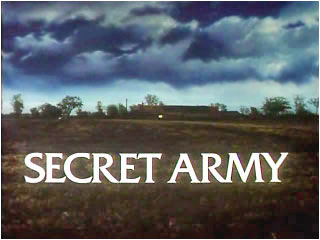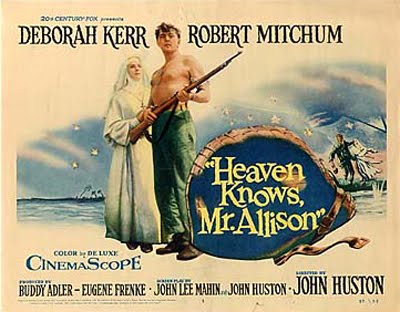So a glance at the TV guide yesterday and I happened to notice it was on. And like an ‘aholic’ of some kind, I simply couldn’t help myself. The number of times I’ve watched this 1968 WWII classic over the years must be close to double figures now. But I was on my own so there was nobody around to roll their eyes and tell me in a slightly derogatory tone how sad I was being. Having said that, even if there had been someone around to point that out, it probably wouldn’t have made any difference. For honestly, I simply cannot help it. It’s a corker of movie – real ‘Boy’s Own’ stuff.
Sure it’s got its flaws, I know that but what movie hasn’t. If you wanted to point out its errors and inaccuracies you’d probably end up with a list as long as your arm but if you just want to be entertained, taken on an action-packed adventure that’s as spectacular to look at as it is intriguing to comprehend then it has everything: fabulous alpine scenery, an enthralling plot, an accompanying soundtrack that stirs and soars and a fine cast headed by two compelling leads – Richard Burton at his grim, authoritative best and Clint Eastwood, as laconic and relaxed as you’ll ever see him. Burton was already well on his way to legendhood (I know there’s no such word but perhaps there should be) at the time of filming and Eastwood was riding the wave of success following a fistful of hit westerns. It’s difficult now to imagine Eastwood playing second fiddle to anyone (post Rawhide) but here he seems quite happy to let Burton take command. And take command he does. His gruff acting stance and inherent screen presence is the backbone of the ensemble and there are one or two moments where he delivers his lines with that sublime baritone of his that’ll either remind you of warm honey or a serrated blade. Other fine performances from the cast come from Anton Diffring as Colonel Kramer, Derren Nesbitt as Major Von Happen, Michael Hordern as Vice Admiral Rolland and Patrick Wymark as Colonel Turner.
By 1968, (the year of this film’s UK release) Alistair MacLean had enjoyed significant success with a number of thrilling adventure novels and with The Guns of Navarone having been made into a box office hit in 1961, it was Burton who approached film producer Elliott Kastner for ideas who in turn persuaded MacLean to write something in a similar vein to Navarone with Burton in mind. It was MacLean’s first screenplay with a title taken from a line of Shakespeare’s Richard III (Act I, Scene III – “The world is grown so bad, that wrens make prey where eagles dare not perch”) and he wrote it in tandem with the novel. The screenplay differs slightly, the characters are less defined, less humorous and more brutal but only to give the cinema audience what they craved. Action, violence and bullets! (Indeed, in all of Eastwood’s films and all the ‘blowing away’ of bad guys he’s done over his long career, this is the film with his highest body count.)
Brian G. Hutton took on the task of directing and he was a man who, at that point in his career had spent more time in front of the camera than behind it. His only other notable work as director (and there are only a total of nine) is another Eastwood led film set during WWII – Kelly’s Heroes – which was made in 1970.
The pacing of Where Eagles Dare is brisk rather than rapid and at two and a half hours, it’s quite a long film (some would argue a tad too long) but Hutton builds the tension masterfully and spreads the action so that there never seems to be a dull moment. As I said earlier the high alpine scenery is just breathtaking and cinematographer Arthur Ibbetson, whose other credits include Whistle Down the Wind (1961) and The Railway Children (1970) captured this magnificently. Snow covered mountains and dense forests of fir have rarely looked more enticing.
Ron Goodwin who scored over 70 films during a fifty year career including Battle of Britain (1969) and 633 Squadron (1964) gives us arguably his most memorable one here. It’s a simple military-sounding theme with variations that run throughout the entire film and it’s made up of an orchestra of quivering strings, rolling drums and soaring brass. There’s no doubt it intensifies one’s enjoyment and adds mood to the scenes in a similar way to perhaps Bernard Hermann’s score to North by Northwest or Elmer Bernstein’s The Magnificent Seven. The music seems to lift us up to that high alpine village, to draw our eyes up to that mountaintop castle with its cable car and to worry our nerves like an ever-present threat of being captured or killed.
The film opens sometime during the winter of ’43-’44 and an elite group of British commandos led by Major John Smith (Burton) and one U.S. Army Ranger Lieutenant Morris Schaffer (Eastwood) are preparing to jump out of a plane over the Bavarian Alps. In a brief flashback we learn of their identities and their mission. To infiltrate a mountaintop castle, the Schloss Adler, and rescue a captured U.S. Army Brigadier General who holds crucial information about the Allied planned invasion of northern Europe – hopefully before the Germans have a chance to interrogate him. But even as the parachutists assemble from their scattered landing positions, knee deep in the thick snow, it becomes apparent that there’s a traitor amongst them. The group’s radio operator didn’t survive the jump and Smith quickly realises that it wasn’t the fall that killed him.
At this early stage there’s an overwhelming sense of mystery about the group as it becomes apparent that Smith isn’t telling the rest of them everything – for instance, he is the only one who’s aware that an MI6 agent Mary Elison (Mary Ure) accompanied them on the plane and jumped out soon after all the men did. He is also the only one aware of another MI6 agent named Heidi (Ingrid Pitt) operating in deep-cover as a barmaid in the village close by the castle. Both women have crucial roles to play in the mission.
And so the scene is set. A rescue mission by British commandos on a mountaintop castle accessible only via a cable car with the aim to prevent the plans of D-Day becoming known to the enemy. But with MI6 involved, agents and double agents, is the mission all it seems?
For a brief moment I was reminded of another film I reviewed recently – I Was Monty’s Double – but I won’t say why just in case you’ve not had the pleasure yet. I’ll let you figure that out for yourselves if and when. And I strongly recommend when.
For me, there’s much to like about this Alistair MacLean written yarn, hence why I’ve seen it as many times as I have. And it’s clear I’m not the only one. There’s an unofficial website for the film on which I’ve just read this little snippet of info – Steven Spielberg admitted in a Channel 4 survey of the top 100 war films that this is his favourite. The film also has its own Facebook page with over 55,000 likes. Not that any of this makes a difference, of course for it’s all down to what we as individuals like. And I for one like and will continue to like (and most likely watch) Where Eagles Dare.





